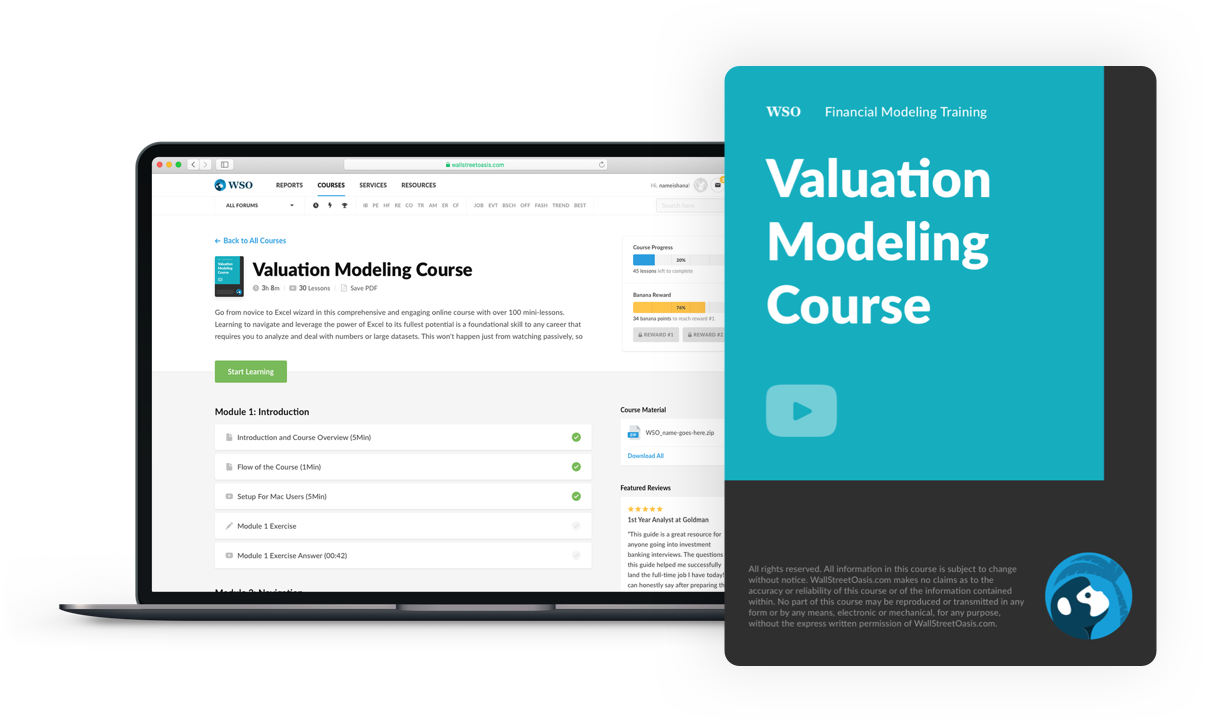
Cost of Preferred Stock
The dividend yield on preferred equity issued by a company.
The cost of preferred stock is the dividend yield on preferred equity issued by a company. It is a component of calculating the company's WACC, which has applications regarding the company's budgeting decisions and project acceptance decisions.

Preferred stock is legally regarded as equity but acts more like a bond. Therefore, it has characteristics like bonds as opposed to common equity. For instance, its stockholders do not have the right to vote, and they are paid before common stockholders in the event of liquidation.
There are three types of preferred stock: cumulative, convertible, and redeemable. Cumulative stock gives the company the option of withholding dividends in times of economic downturn and paying them off once the firm is able to.
Convertible shares give the investor the option to convert them to common stock. This can be done either through board members' votes, individual investors' decisions, or automatically on a predetermined date.
Lastly, redeemable shares give companies the option to call back their stock after a certain date, typically if interest rates drop. However, this type has a higher return for the investor because of the added redemption risk.
Not all companies choose to have these securities as a part of their capital structure. Some companies prefer more debt and others more common equity. The capital structure of a firm depends on which ratio adds the most value to it.
What is the Cost of Preferred Stock?
It is the price preferred stock pays in return for the annual income the stock provides in the form of a dividend to its preferred equity investors expressed as a percentage. In other words, it is the dividend yield on preferred equity securities issued.

There are a couple of common ways for companies to raise funds for future projects: retaining earnings and issuing stocks, bonds, or preferred stocks. The cost of preferred stock is used by managers when determining which method of raising capital is the most effective.
Managers use a formula to calculate the cost of preferred equity so they can compare it with the rate of other financing options.
Likewise, it is an important metric because it is used by companies to determine their accurate Weighted Average Cost of Capital (WACC), which has numerous applications. For reference, the formula for WACC is as follows where "Rp" is the abbreviation for the cost of equity:
WACC= Re* We + Rp * Wp + Rd * Wd
The formula for the cost of preferred stock is similar to the perpetuity formula, due to its unamortized nature. However, it differs in the denominator, as the perpetuity formula has the interest rate as the denominator as opposed to the price of the security.
The cost of preferred equity is calculated by dividing its dividend per share by its current price, as per the following formula:
Rp= Dividend per share/ Current price
For instance, a company has an annual dividend of $4 and its current price per preferred share is $30. Therefore, we can Rp by using the formula as follows:
Rp= 4/ 30= 0.13
The Rp is equal to 0.13 or 13%. Therefore, the yield on the company's preferred stock is 13%. Managers will use this rate in calculating the WACC, as well as compare it to the rates of other financing options to determine the extent to which it will fund their operations.
What is Preferred Stock?
Preferred stock is a form of equity that firms issue in order to raise funds. Legally, it is regarded as equity, but its characteristics are more similar to bonds.
Preferred equity owners get paid prior to common stock owners and the dividend rates remain the same.

Therefore, the dividend received by investors does not increase as the company expands, as it does with common equity dividends. Additionally, the company is obliged to pay a fixed dividend even in periods of loss.
These securities can be attractive for investors who dislike risk altogether or who are looking to diversify their portfolios with more stable securities.
Therefore, the risk and return are lower for preferred stocks compared to common stocks. Additionally, the seniority structure forbids the company from legally issuing dividends to common stockholders before preferred equity holders.
Preferred equity owners do not have any voting rights, as opposed to common stockholders. Therefore, they do not have any decision-making power in the company.
Most companies choose to keep their preferred equity financing lower than common equity and debt financing due to the latter two being more advantageous. For instance, companies commonly use debt financing to pay fewer taxes because the interest on debt is tax-deductible.
The effect of preferred stock on the WACC of a company can be minuscule, but it still needs to be acknowledged for complete accuracy.
However, all debt instruments are above equity regarding seniority, due to the company's obligation to pay them off before rewarding their shareholders with dividends. In fact, there are strict regulations that support this seniority structure.

As previously mentioned, this type of stock is commonly known as "perpetuity" due to the nature of their payments being constant with no maturity date. That is why the formula for this metric closely mimics the perpetuity formula.
The price of preferred stock, regardless of its fixed monthly payments to investors, is subject to market changes.
Sometimes preferred equity is issued with additional options that can impact its yield and cost of financing. The features include all kinds of call options such as conversion features, cumulative paid-in-kind dividends, etc. These changes need to be adjusted.
Types of Preferred Stock
There are several types of preferred equity stock, and they all have different characteristics. These types include:
1. Convertible
This type of stock has the ability to be converted into common stock in the future. When it gets converted depends on the preset conditions of the stock.
An individual investor can also decide to convert. However, it would only be profitable to exercise this right if the price of the common stock were more than the net present value of the preferred stocks.
Likewise, the stock could have a predetermined date of conversion or the company's board of directors may have the ability to vote for a conversion.

2. Cumulative
This type allows companies to delay dividend payments in times of downturn. However, they are required to pay back all the missed dividends when they are financially able to and must do so before distributing any dividends to common stockholders.
3. Redeemable
This type gives the company the option to redeem the stock at any given time after a certain preset date, which is usually after a few years.
The option best describes the price the company will pay for the stock. This type of stock is subject to redemption risk and has a higher dividend to compensate for it.
Companies can use this option when interest rates drop. Thereafter, they could issue new preferred stocks at a lower rate and distribute smaller dividends instead. If a company chooses to do so, it means less profit for the investor. This is why this option has a higher risk.
How is the Cost of Preferred Stock related to WACC?
As previously mentioned, this metric is used in calculating a company's WACC. The formula for WACC is estimated by multiplying each component's weight by the component cost and summing up the products.

It takes into consideration the three main financing methods as well as the flotation rate. Each financing method has its own risk and return profile and, therefore, its own rate of return required by investors.
The WACC is essentially the minimum acceptable rate of return that the firm should earn on its investments of average risk in order to be profitable.
Its applications include the discount rate for computing Net Present Value (NPV) and the hurdle rate to compare with the Internal Rate of Return (IRR).
Both of these metrics are used by companies in their capital budgeting decision-making process to determine the profitability of expansion projects and to select the most profitable ones.
WACC is evidently a key metric for companies, and it cannot be calculated accurately without the cost of preferred equity.
Debt vs. Equity Financing
When a company takes on more debt financing it is called "leveraging". Companies that choose to alter their capital structure and leverage themselves receive many benefits, including the presence of a "tax shield".

The tax shield is a phenomenon that occurs due to debt repayments being tax-deductible. Therefore, companies that take on debt pay less tax on their income, and the equity holders enjoy more in residual profits.
Likewise, debt holders do not have as much decision-making power as shareholders do, which can be beneficial to the company as it can lead to more control by the core management.
However, companies cannot take on too much debt due to the risk of bankruptcy, which occurs when companies are unable to pay off their debt obligations and have to shut down, sell off assets, and/or restructure.
Likewise, increasing leverage can result in added value for the firm. As the debt tax shield results in increased residual income, it can increase the company's earnings before interest and taxes (EBIT).
An increased annual EBIT is the first sign that the company has increased its value. However, it depends on the company in question.
For instance, some companies choose to have an equity-dominant capital structure because they are not obliged to pay back those funds. Therefore, they can invest the residual income in future value-adding projects.
A company can choose to increase its leverage as long as it is adding value to the firm. However, the optimal capital structure is one that serves the individual company the most and fits in with its unique method of operating.

Debt Financing Advantages:
- No ownership of the company is being transferred to the holder of the security.
- A tax shield is present due to the debt being tax deductible.
- Financing with bondholders' money
- Leverage adds more risk and higher return to stockholders
- Can add to the firm's value
Equity Financing Advantages:
- Less bankruptcy risk
- No obligation to repay the money invested
- Paid last in the event of liquidation (typically the residual amount, if any)
FAQs
It is the yield the company receives on its preferred equity. Its role is to give an accurate estimate of the WACC which helps the firm select future projects to further expand and bring in more profits.
Preferred equity prices tend to mimic bond prices more than common stock prices. Like with bonds, the relationship between price and interest rate is inverse. Therefore, when interest rates rise, the price falls, and vice versa.
WACC would not be as accurate if the company issues preferred equity but does not include it in its WACC calculations. Even marginal differences can have a big impact in the long run. Therefore, it is important for businesses to have exact numbers.
They can be bought the same way as common stocks. First, you need to access the capital markets through a brokerage account.
You can then search for these securities, but they might not be listed together with common stock. There is a chance that they are on a different section of the website. However, keep in mind that not all companies issue these securities.
The answer depends on the investor in question. If an investor is more risk averse, he or she might be more comfortable with preferred shares over common shares, due to their fixed dividend.
Likewise, preferred shares may be better for short-term investments or investors who can't hold the common stock long enough to overcome dips in the share price.
However, for investors who are willing to take the risk and possess larger funds, common stocks can be a better option. Through common stock, investors can see the companies they believe in growing along with their dividends and equity value.
There are multiple courses on the WSO website that can teach you how to do financial valuations used by firms on a daily basis.

Everything You Need To Master Valuation Modeling
To Help You Thrive in the Most Prestigious Jobs on Wall Street.


or Want to Sign up with your social account?